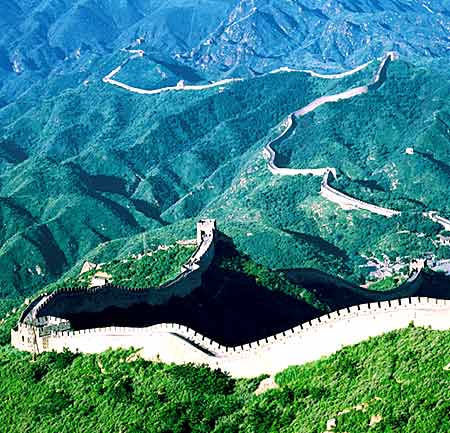Welcome To China
China
March 14, 2008
Time is like rain .It can wash over me in a deluge or softly as a light mist.I 've noticed that brief flickers of my life,when it was a child ,return from time to time.The silver lure was striking the water and caused coloured ripples in the sunset;the happy kite was flying freely between green grass and blue sky,dusting nothing,fussing nothing.
But now ,that all only seemed to be my memories and left me in the endless busy work.I was like a puppet with no feeling.
One night,when I was alone under the eternal universe adorned with glitting stars.In the moment,I was shocked by something in the sky,also within meself.Clearly I heared and saw that life should be a pattern of experience to savor,not endure.
And now ,every morning when I open my eyes ,I tell myself that it is special .Every day,every minute,every breath truly is ...a gift from God.
- 2 Comments
- Comment on this
|
07:25 AM Oct 23 2008 |
|
|---|---|
|
tramminhhienthao
|
|
|
09:46 AM May 20 2008 |
|
|---|---|
|
bnayan
|
|
March 9, 2008
Hi,dear friends:
Welcome to China!

From Shanhaiguan, northeast of Qinhuangdao City, Hebei Province in the east coast, the Great Wall rises and falls with the contours of the mountains westward, crossing the provinces, municipalities and autonomous regions of Liaoning, Hebei, Tianjin, Beijing, Shanxi, Inner Mongolia, Shaanxi, Ningxia and Gansu for 6,700 kilometers, to end at Jiayuguan, southwest of Jiayuguan City in Gansu Province.

The construction of the wall began during the Spring and Autumn period (770-476 BC) and Warring States period (475-221 BC) during the Eastern Zhou Dynasty. Ducal states at that time built walls to defend their own territories. After the First Emperor of the Qin Dynasty crushed all rival states, he founded the first centralized and unified dynasty in Chinese history. To consolidate the country and ward off invasion by ethnic minority tribes in the north, he had the walls linked and extended, giving rise to the 5,000-kilometer-long Qin Great Wall. Later dynasties from Han (206 BC – AD 220) to Ming (1368-1644) kept building and improving the wall, extending it more than 1,000 kilometers to today‘s scale.
The Great Wall comprises walls, passes, watchtowers, castles and fortresses. The walls are made of large stone strips. From east to west, the sections at Shanhaiguan, Jinshanling, Mutianyu, Badaling and Jiayuguan have become tourist attractions.
The Great Wall we see today mostly dates back to the Ming Dynasty. The best-preserved and most imposing section is at Badaling in Beijing. The section, located outside the Juyongguan Pass, is made of large blue bricks and has an average height of 7.8 meters. Five to six horses can be ridden abreast along it. At regular intervals there is an arched door leading to the top of the wall. The walls are covered with many lookout holes, window embrasures and castellated crenels. Beacon towers were also built at fixed intervals for passing on military information. All these indicate the important role of the Great Wall in military defense.
As one of the most magnificent ancient defense works, the Great Wall is known as one of the wonders of the world. All tourists now know the saying, "You are not a real person until you have climbed the Great Wall."
The Great Wall was put on the world cultural heritage list in 1987.






